FUNDING CUTS IMPACT CT HUMANITIES: Help CT Humanities navigate recent funding cuts and continue our vital work across Connecticut. All donations made to CTH will be matched dollar-for-dollar up to $50,000. Donate today!
News & Updates

Six Cities Respond to 1902 Waterbury Fire – Who Knew?
A fire, which swept through Waterbury on a stormy February evening in 1902, would become the worst in its recorded history up to that point.
Read
First General Copyright Law – Today in History: January 29
In 1783, Connecticut became the first state to pass a general colonial copyright law, entitled “An Act for the Encouragement of Literature and Genius.”
Read
First Commercial Telephone Exchange – Today in History: January 28
On January 28, 1878, the Boardman Building became the site of the world’s first commercial telephone exchange, the District Telephone Company of New Haven.
Read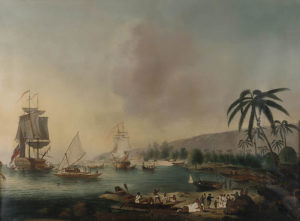
John Ledyard, Connecticut’s Most Famous Traveler
This intrepid voyager, one of the most adventurous figures in Connecticut’s long history, would have made a great fictional character had he not been real.
Read
The Astronomical Event of the Century
Church bells chimed and factory whistles blew and automobiles, trains, and trolleys throughout the state came to a standstill.
Read
John Fitch Born – Today in History: January 21
On January 21, 1743, John Fitch, an inventor and pioneer in steamboat construction, was born in Windsor–a settlement in the British colony of Connecticut.
Read
Nancy Toney’s Lifetime in Slavery
From scant evidence, including a portrait, gravestone, census data, and will, a partial image of a Connecticut life lived in slavery emerges.
Read
Almost a Tragedy: The Collapse of the Hartford Civic Center
In the early morning of January 18, 1978, the roof of the sports coliseum collapsed onto 10,000 empty stadium seats.
Read
The Tariffville Disaster – Today in History: January 15
On January 14, 1878, at about 10:00 p.m., a span of the Tariffville Bridge gave way, plunging a Connecticut Western Railroad train into the Farmington River.
Read
The Industrial Revolution Comes to Jewett City
The site of earlier mills, Jewett City seemed well-suited to the Tibbets’ textile enterprise: the Jewett City Cotton Manufacturing Company.
Read
An Uncommonly Ingenious Mechanic: Abel Buell of Connecticut
This Yankee jack-of-all-trades, Abel Buell, created the first map of the new United States to be printed and published in America.
Read
Connecticut Arms the Union
By the Civil War’s end, Connecticut had supplied 43% of the total of all rifle muskets, breech loading rifles and carbines, and revolvers bought by the War Department.
Read
Land Purchase Becomes Bushnell Park – Today in History: January 5
On January 5, 1854, Hartford voters approved spending over $100,000 in public funds for land that would become a municipal park.
Read
Hartford Publishes the First Literary Work by an African American – Who Knew?
Jupiter Hammon, who endured life-long enslavement, became the first African American writer to be published in America when his 88-line poem, “An Evening Thought: Salvation by Christ with Penitential Cries”, was published.
Read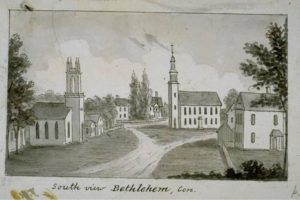
The Reverend Joseph Bellamy Makes Bethlehem a Holy Place
The Reverend Joseph Bellamy was a dynamic preacher, author, and educator during the 18th century and a long-time resident of Bethlehem, Connecticut.
Read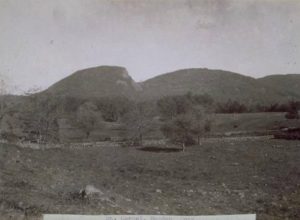
A Volcanic Giant Sleeps in Hamden
The unique ridge that runs east-west just six miles north of New Haven is known as “Sleeping Giant” for its resemblance (from a distance) to a recumbent person.
Read
Connecticut Poor Law Aimed to Care for the Needy
Connecticut instituted a Poor Law in the 17th century to comply with a directive from the British government that the colony ensure for the care of the poor within its borders
Read
Charles McLean Andrews and Evangeline Walker Andrews
Charles McLean Andrews was one of the most distinguished historians of his time, generally recognized as the master of American colonial history.
Read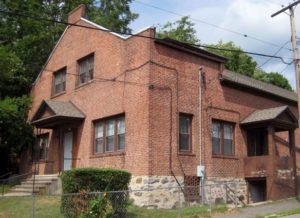
A Woman Who Developed Tolerance: Leila T. Alexander
As a member of the War Council, Leila T. Alexander served on several Council committees including education, employment, advisory, social service, and welfare.
Read
Iron and Water: The Norwich & Worcester Railroad Story
Connecticut’s early railroad history had at its core the goal of linking New York City and Boston through a hybrid system of steamboats and trains.
Read
“Negroes Who Stand Up and Fight Back” – Paul Robeson in Hartford
Called the “greatest mobilization of police in the city’s history,” the event that brought law enforcement out in force to Keney Park was not a riot, not a strike, but a concert by this singer-actor and activist.
Read
Meriden’s Silver Lining
Despite large numbers of local industries going out of business by the start of the Civil War, Horace and Dennis Wilcox, helped establish a lucrative silver industry in Meriden.
Read
Honor and Duty: The Life of Alfred Howe Terry
Born in Hartford, Alfred Howe Terry studied law before heroically capturing Fort Fisher during the Civil War.
Read
Disaster at Cold Harbor: Connecticut’s Second Volunteer Heavy Artillery Regiment
For many veterans of the Second, the assault at Cold Harbor would be the most terrible memory of their Civil War careers.
Read
Clarence Dickinson Carries Printing Innovation into the 20th Century
Clarence Dickinson was a long-time Haddam resident and pioneer in offset lithography—a process using printing plates on chemically treated flat surfaces.
Read
Hurricane of 1938: Connecticut’s Worst Disaster
Deadly as well as costly, this storm scarred the landscape for decades after and left each Connecticut family with its own tale to tell of the ruinous events.
Read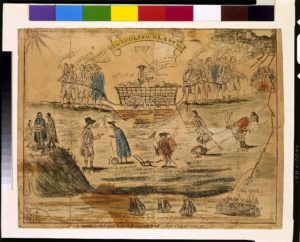
The Connecticut Ratification Convention
Though approved at a renegade convention on September 17, 1787, the US Constitution did not become “the supreme law of the land” until 9 of the 13 states ratified the document.
Read
Igor Sikorsky and his Flying Machines
This Russian émigré not only invented a machine capable of controlled vertical flight, he also re-invented his aviation career along the way.
Read
Windsor Tobacco: Made in the Shade
By the mid-19th century, the “Tobacco Valley,” Springfield, Massachusetts to Hartford, Connecticut had become a center for cash-crop production.
Read
Women Win the Right to Vote
After a decades-long struggle, women in Connecticut and across the US gained a say in government.
Read
North Stonington Fairs Preserve Connecticut’s Agricultural Heritage
Despite brief success as a mill town in the early 19th century, North Stonington is ultimately tied to its agricultural history.
Read
Kensington Soldiers Monument Dedicated – Today in History: July 28
On July 28, 1863, the Soldiers Monument in the Kensington section of Berlin was dedicated and is the oldest permanent Civil War monument.
Read
Senator Oliver Ellsworth’s Judiciary Act
On April 7, 1789, the Senate appointed a committee, composed of one senator from each of the 10 states then represented in that body, to draft legislation to shape the national judiciary.
Read
The Hartford Circus Fire
As a result of the Hartford Circus Fire of 1944, Connecticut enacted new, strict fire safety regulations for public performances.
Read
Charlotte Perkins Gilman Born – Today in History: July 3
On July 3, 1860, Charlotte Anna Perkins (Charlotte Perkins Gilman) was born in Hartford, Connecticut.
Read
Noble Jerome’s Clock Patent Model
Noble Jerome submitted this clock patent model to the US Patent Office along with his patent application in 1839, a common requirement up until the 1880s.
Read
One of the Honored Dead: General J. K. F. Mansfield
A resident of New Haven and Middletown, Joseph Mansfield rose to the rank of brigadier general in the Union army before losing his life at the Battle of Antietam.
Read
Where Mr. Twain and Mrs. Stowe Built Their Dream Houses
This bucolic oasis on Hartford’s western edge became home to great literary talents, social reformers, politicians, and other nationally-regarded luminaries of the mid-to-late 1800s.
Read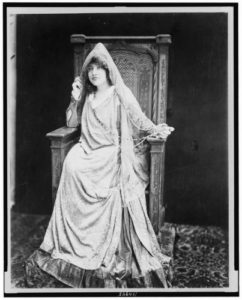
Sarah Bernhardt Performs in Hartford – Today in History: June 8
On June 8, 1906, French stage and film actress Sarah Bernhardt appeared at Foot Guard Hall in Hartford.
Read
Gothic Connecticut
A museum, former library, and a home are just three notable examples of an architectural style popular in the 1800s.
Read
The House That Hoadley Built
The Wheeler-Beecher House (Hoadley House) serves as an outstanding example of Colonial architecture and also of renowned architect David Hoadley’s work.
Read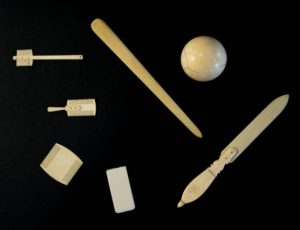
Phineas Pratt’s Machine for Making Combs – Today in History: April 12
On April 12, 1799, Phineas Pratt of Ivoryton, Connecticut, a deacon, silversmith, and inventor, received a patent for a “machine for making combs.”
Read
Union Brew
Brewery strike in 1902 leads some to drink ginger ale, rather than beer, as a sign of solidarity.
Read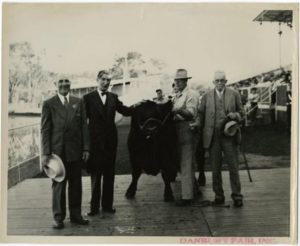
Hard Times: Governor Wilbur Cross and the Great Depression in Connecticut
Born in Mansfield, Governor Wilbur Cross helped see Connecticut through the Great Depression and several natural disasters.
Read
The British Raid on Essex
On a cold April night in 1814, a British raiding force rowed six miles up the Connecticut River to burn the privateers of Essex, then known as Pettipaug.
Read
P. T. Barnum Dies – Today in History: April 7
On April 7, 1891, the showman and entertainer, P. T. (Phineas Taylor) Barnum died in Bridgeport.
Read
Knights of Columbus Chartered – Today in History: March 29
In October 1881, the Reverend Michael Joseph McGivney and male parishioners of St. Mary’s Roman Catholic church in New Haven founded Knights of Columbus.
Read
Fire at Wesleyan’s North College – Today in History: March 1
On March 1, 1906, North College at Wesleyan University in Middletown was destroyed by fire.
Read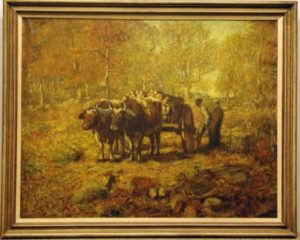
Artist Louis Paul Dessar Dies – Today in History: February 14
On February 14, 1952, American artist Louis Paul Dessar died in Preston, Connecticut.
Read
Branding Law Enacted – Today in History: February 5
In 1644, Connecticut enacted the first branding law in the colonies, calling for all livestock owners to ear-mark or brand their cattle, sheep, and swine.
ReadMore Articles




